Ch 13 pt 2 parasite pictures
1/12
There's no tags or description
Looks like no tags are added yet.
Name | Mastery | Learn | Test | Matching | Spaced |
|---|
No study sessions yet.
13 Terms
The capitulum of a tick has 2 cutting organs called what?
Chelicerae
The name of the penetrating, anchor-like sucking organ is?
Hypostome
The tick’s body is covered partially or entirely by a hard chitinous plate called the ____.
Scutum
Some female tick’s salivary secretions cause a syndrome called…
Tick Paralysis
The 2 tick families are the Argasid ticks or ____ and the Ixodid ticks or ____?
Argasid ticks - SOFT ticks
Ixodid ticks - HARD ticks
How long can ticks survive without a blood meal?
2-3 years
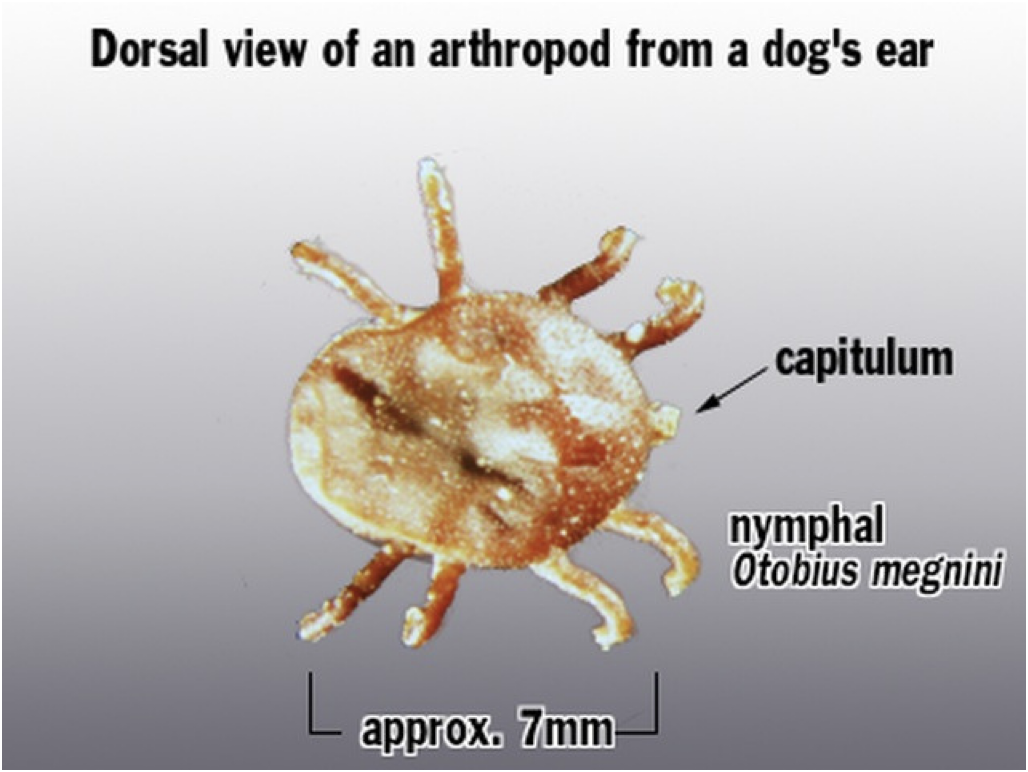
Spinose ear tick
This tick is usually found in the ears of the definitive host. Large numbers can cause ulceration deep in the external ear and the common name is the Spinose ear tick.
*ONLY ARGASID TICK (soft tick)
Otobius megnini
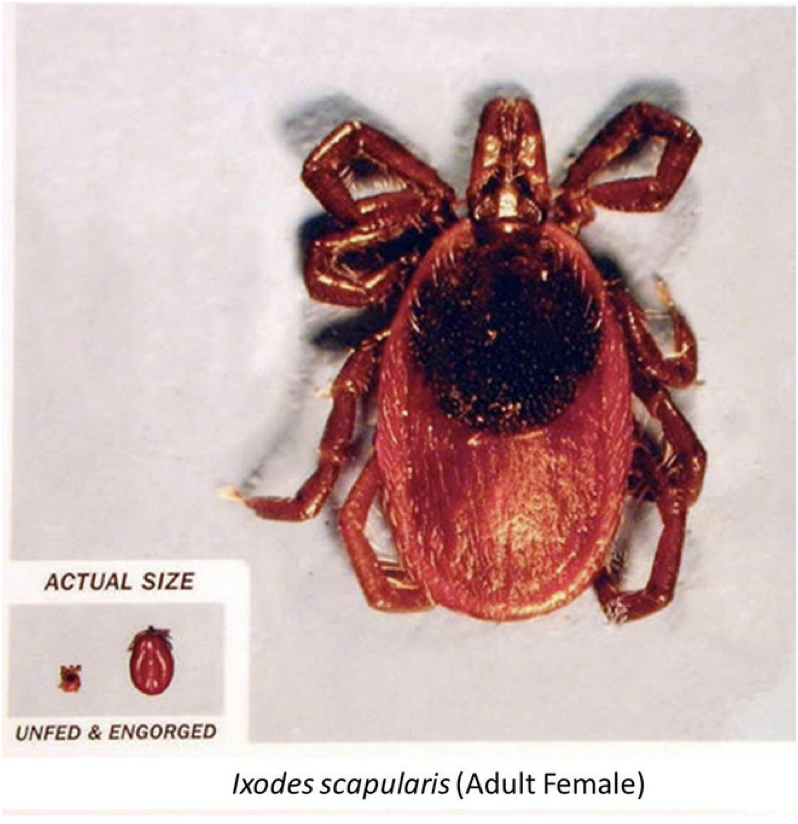
Deer tick
These ticks are vectors for bacterial diseases such as tularemia, Babesia microti, Borrelia burgdorferi (lyme disease) and granulocytic ehrlichiosis (in humans)
can cause tick paralysis
Ixodes scapularis

Brown Dog tick
INTERMEDIATE HOST FOR BABESIA CANIS
feeds exclusively on the dog
Rhipicephalus sanguineus
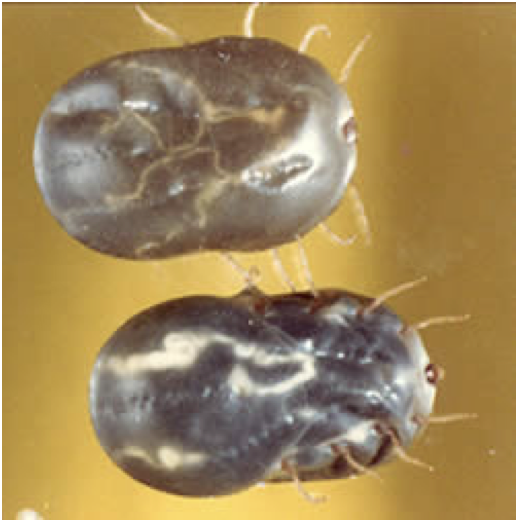
Texas Cattle Fever Tick
1st arthropod to be shown to serve as the INTERMEDIATE HOST for Babesia bigemina
COMPLETELY ERADICATED FROM U.S, is REPORTABLE
Rhipicephalus annulatus
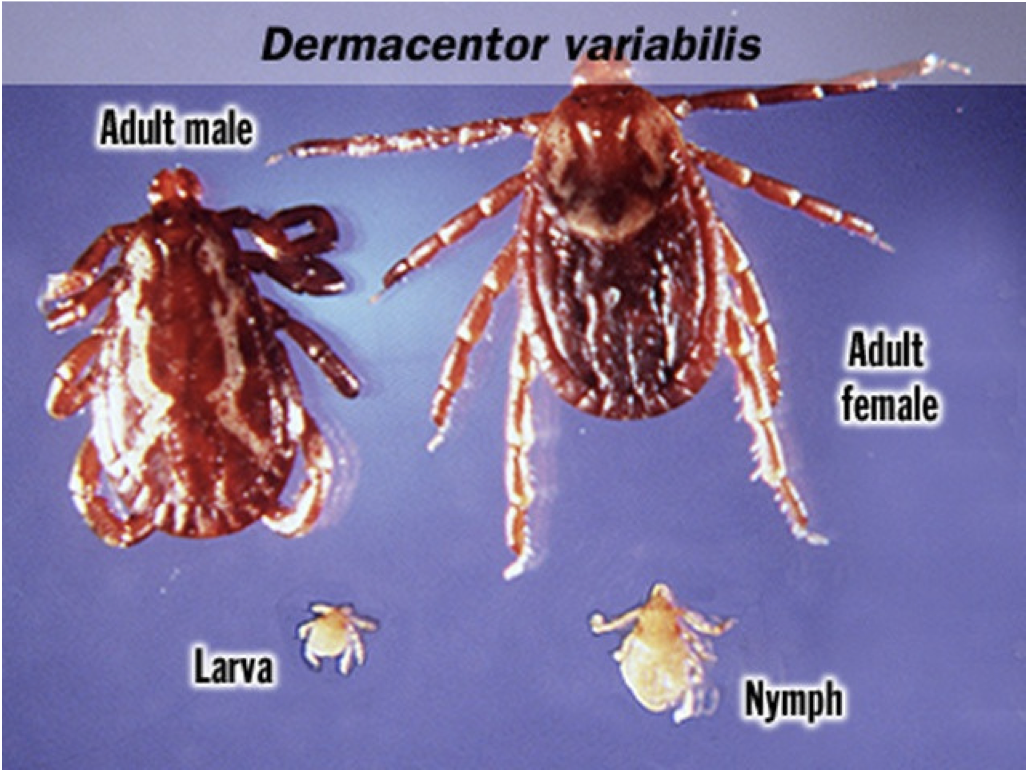
American Dog Tick
PRIMARY VECTOR FOR ROCKY MOUNTAIN SPOTTED FEVER RMSF, tularemia and other microbes
associated with tick paralysis
Dermacentor variabilis
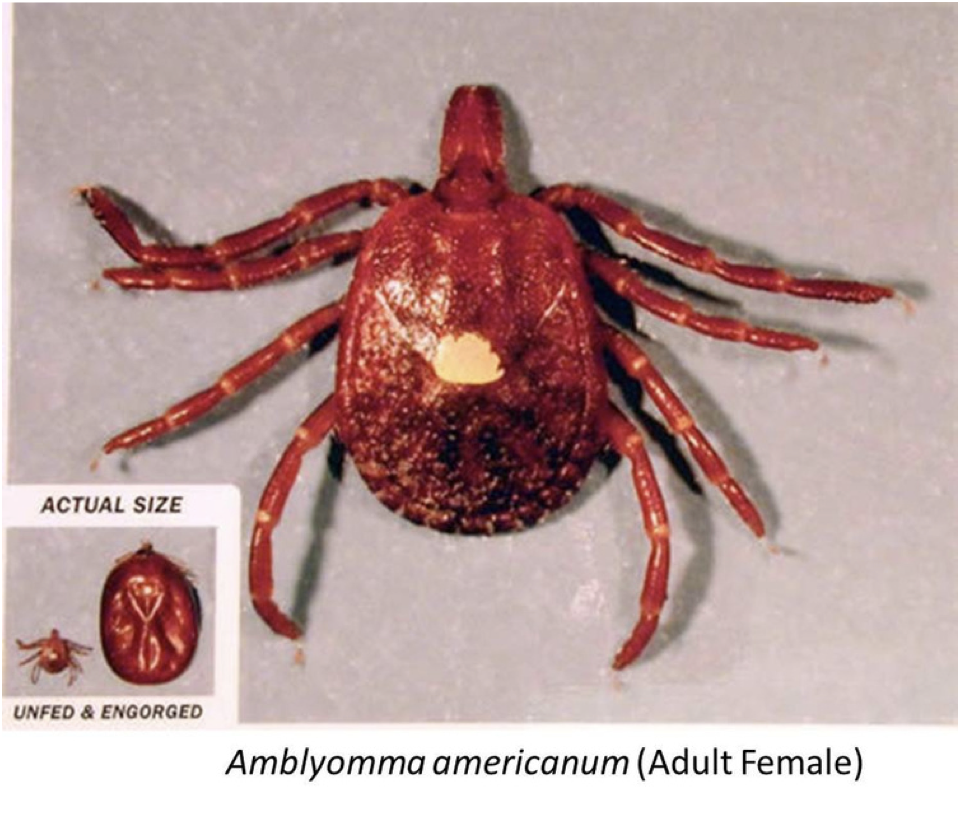
Lone Star Tick
produces anemia, vector for tularemia and RMSF
will feed on humans, loves to attach to the ear
Amblyomma americanum
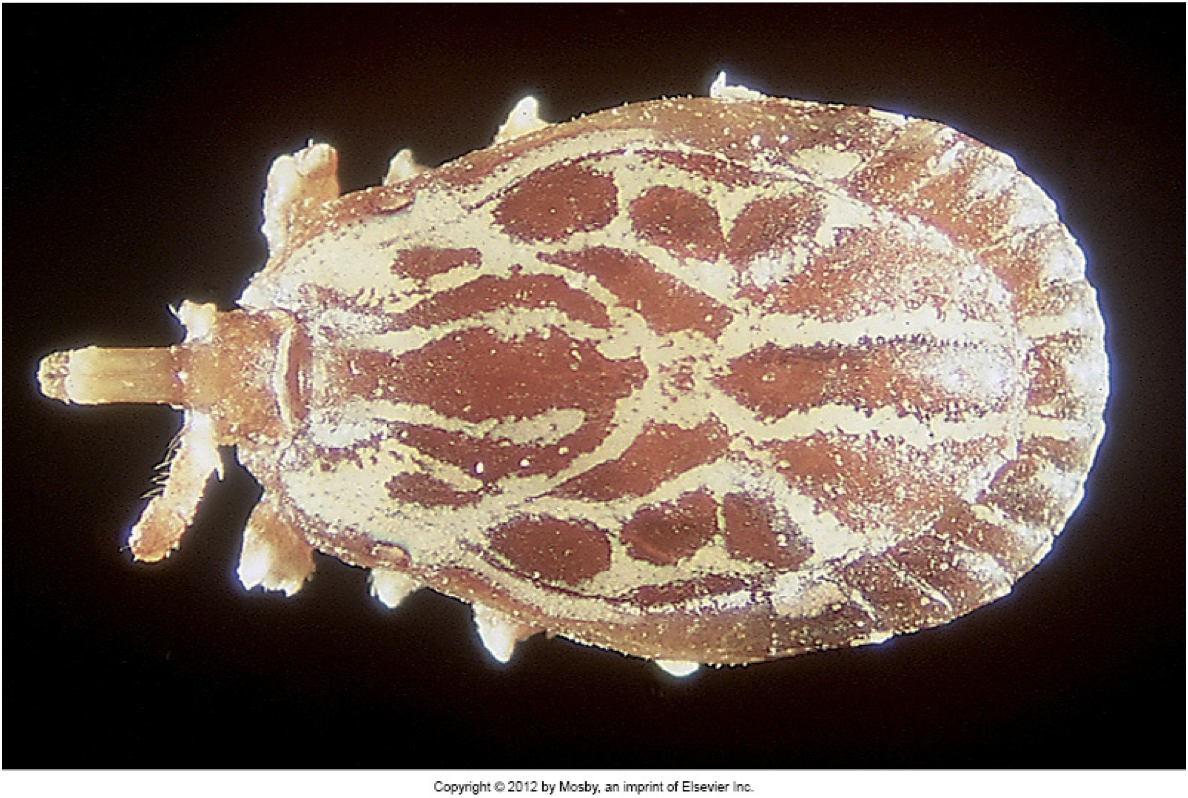
Gulf Coast Tick
INTERMEDIATE HOST FOR HEPATOZOON AMERICANUM
associated w/ tick paralysis, produces severe bites and painful swellings
Amblyomma maculatum